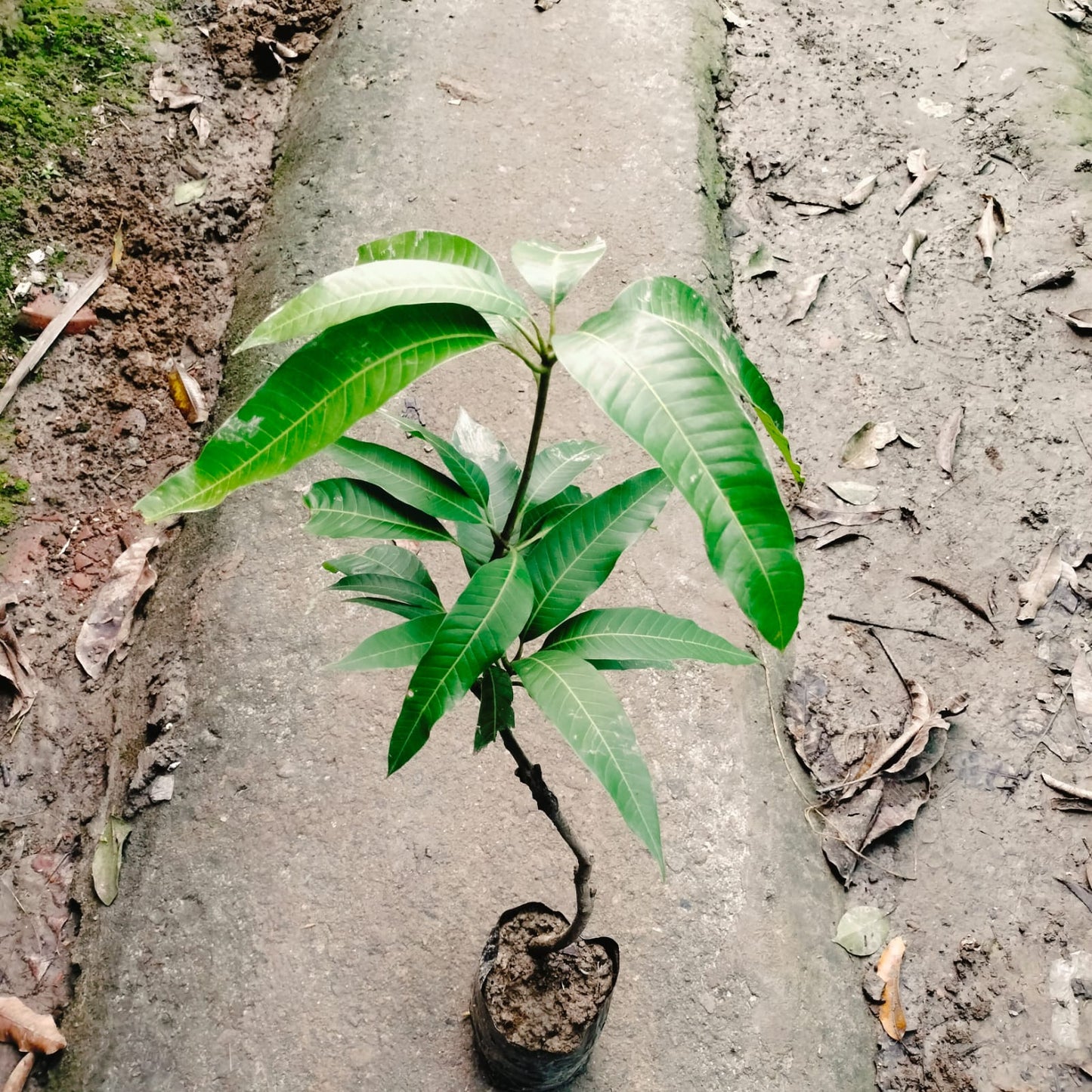PlantsKingdom
The "Bari -13" mango plant|Bari Mango-13 Plant Purchase
Couldn't load pickup availability
The "Bari -13" mango plant, also known as "Bari Mango-13," is a specific variety developed through agricultural research in Bangladesh, particularly by the Bangladesh Agricultural Research Institute (BARI). Here’s a description of this mango variety:
General Characteristics:
-
Plant Size: Bari-13 mango trees are typically medium to large in size, with a spreading canopy. They are well-suited to the tropical and subtropical climates of Bangladesh and similar regions.
-
Leaves: The leaves are lanceolate, dark green, and glossy, typical of mango trees. They provide dense foliage.
Fruit Characteristics:
-
Size: The mangoes produced by the Bari-13 variety are medium to large in size.
-
Shape: The fruits are generally oval-shaped with a slightly flattened appearance.
-
Color: When ripe, Bari-13 mangoes develop a bright yellow to golden skin color, sometimes with a slight red blush on the sun-exposed side.
-
Flesh: The flesh of Bari-13 mangoes is deep orange, juicy, and fiberless, making it highly desirable for fresh consumption. The flavor is sweet with a rich, aromatic fragrance.
-
Seed: The seed is relatively small compared to the fruit size, leaving a higher proportion of edible flesh.
Growth and Harvest:
-
Flowering Season: The tree typically flowers in the late winter to early spring months.
-
Harvest Time: Fruits are usually ready for harvest in the mid to late summer, depending on the specific growing conditions and climate.
-
Yield: Bari-13 is known for its high yield, producing a significant number of fruits per tree under optimal growing conditions.
Pest and Disease Resistance:
- This variety has been developed to be more resistant to common mango pests and diseases, although specific resistance may vary based on local conditions.
Uses:
-
Fresh Consumption: The fruit is primarily consumed fresh due to its sweet, juicy, and fiberless flesh.
-
Culinary Use: It can also be used in a variety of culinary applications, including juices, smoothies, and desserts.
Materials
Materials
Shipping & Returns
Shipping & Returns
Dimensions
Dimensions
Care Instructions
Care Instructions




Image with text
Pair text with an image to focus on your chosen product, collection, or blog post. Add details on availability, style, or even provide a review.
-
Free Shipping
Pair text with an image to focus on your chosen product, collection, or blog post. Add details on availability, style, or even provide a review.
-
Hassle-Free Exchanges
Pair text with an image to focus on your chosen product, collection, or blog post. Add details on availability, style, or even provide a review.



